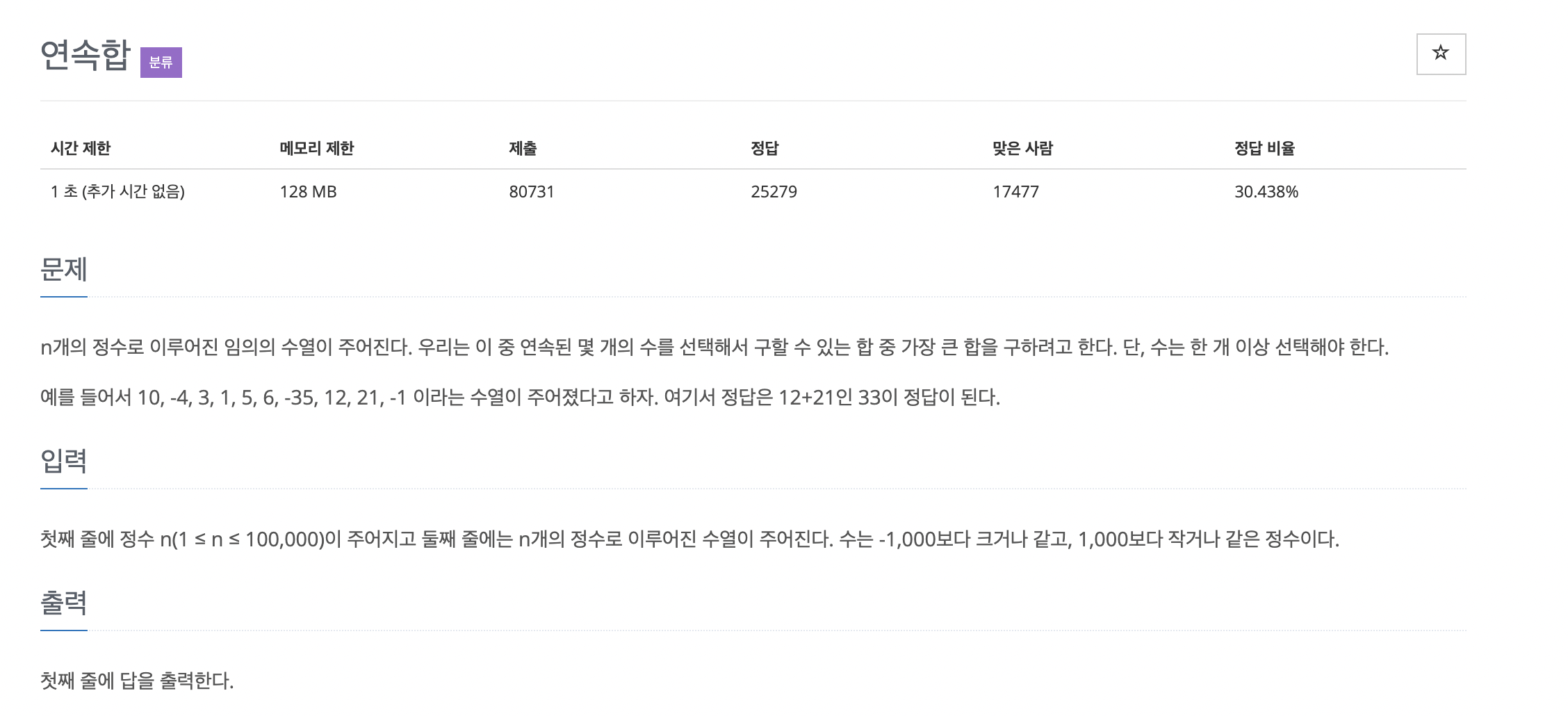Baekjoon Online Judge
algorithm practice
- 단계별 문제풀기
15. 동적 계획법1
기초적인 동적 계획법 문제들을 풀어봅시다.
Java / Python
15. 연속합
가장 큰 연속합을 구하는 문제

- Java
import java.io.BufferedReader;
import java.io.InputStreamReader;
import java.io.IOException;
import java.util.StringTokenizer;
public class Main{
static Integer[] dp;
static int[] nums;
static int max;
public static void main(String[] args) throws IOException {
BufferedReader br = new BufferedReader(new InputStreamReader(System.in));
int N = Integer.parseInt(br.readLine());
dp = new Integer[N];
nums = new int[N];
StringTokenizer st = new StringTokenizer(br.readLine(), " ");
for(int i = 0; i < N; i++) {
nums[i] = Integer.parseInt(st.nextToken());
}
dp[0] = nums[0]; //index 0 값은 첫 원소로 탐색할 것 X
max = nums[0];
repeat(N - 1); // dp의 마지막 index N-1부터 Top-Down 탐색
System.out.println(max);
}
static int repeat(int N) {
// 탐색하지 않은 인덱스의 경우
if(dp[N] == null) {
// (이전 배열의 누적합 + 현재 값)과 현재 값을 비교-> 최댓값 N위치에 저장
dp[N] = Math.max(repeat(N - 1) + nums[N], nums[N]);
max = Math.max(dp[N], max);
}
return dp[N];
}
}- Python
import sys
N = int(sys.stdin.readline())
nums = list(map(int, sys.stdin.readline().split()))
dp = [nums[0]]
for i in range(len(nums) - 1):
dp.append(max(dp[i] + nums[i + 1], nums[i + 1]))
print(max(dp))